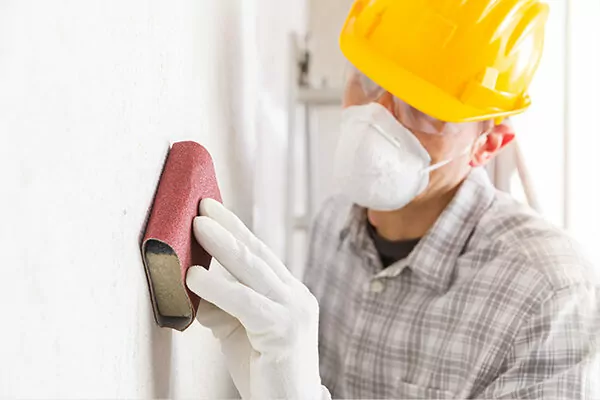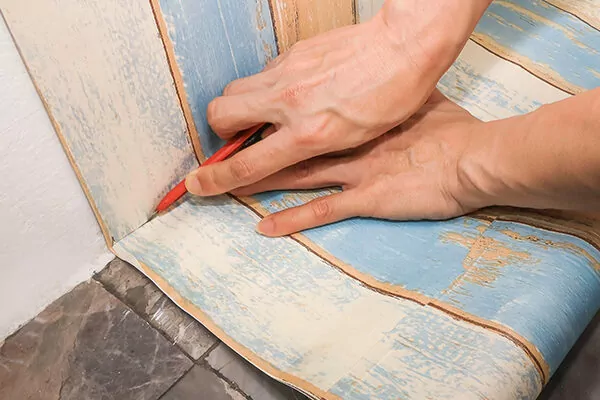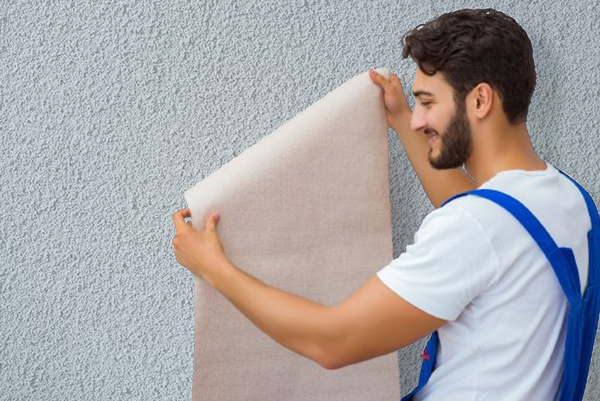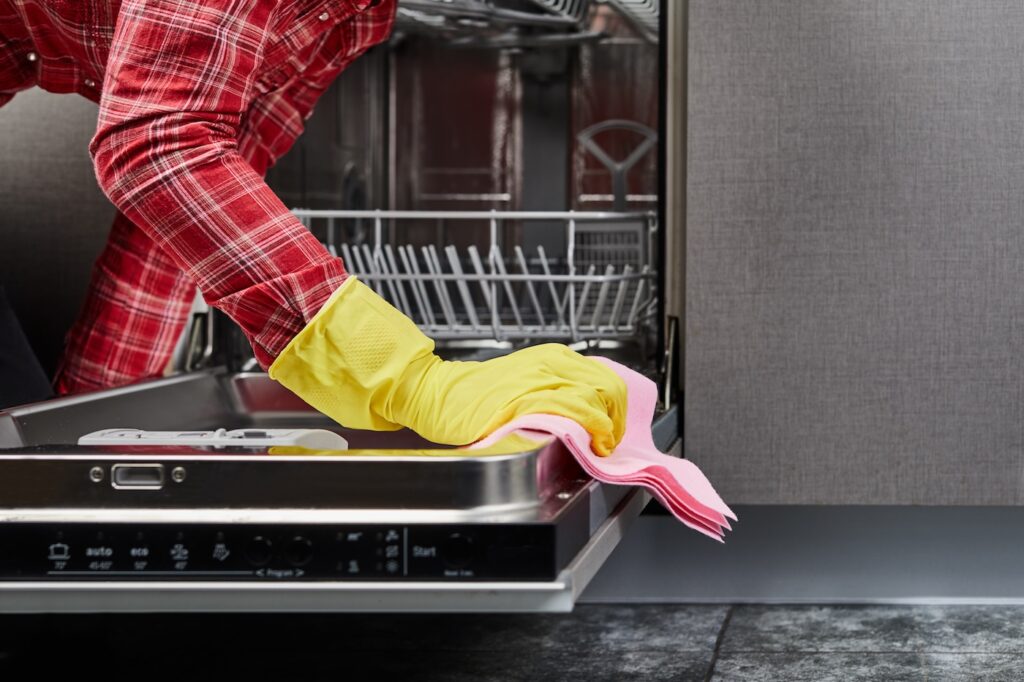Transforming your interior space with wallpaper can add a touch of elegance, sophistication, and personality to your home. While smooth walls are often considered the ideal surface for wallpaper, textured walls can also be successfully decorated with stunning wallpaper designs.
Can You Wallpaper Textured Walls?
The answer is a resounding yes! Contrary to popular belief, textured walls can be successfully transformed with wallpaper, adding depth, character, and a unique touch to your living space. While it’s essential to acknowledge that the process requires a bit more consideration and preparation compared to smooth walls, the end result can be equally stunning and impressive.
To successfully wallpaper a textured wall, Taskers recommend that you understand the nuance of different textures and select the appropriate wallpaper and preparation technique. While it may seem daunting at first, you can transform your textured walls into stunning focal points with the right approach.
Wall Texture Types: Understanding Their Characteristics
Textured walls come in a variety of styles and finishes, each with a unique set of characteristics. Familiarizing yourself with the different wall texture types is crucial for selecting the appropriate wallpaper and preparation method.
1. Popcorn Walls

Popcorn walls, with their bumpy, crater-like texture, are the most challenging type for wallpapering. The rough surface can cause the wallpaper to adhere unevenly, resulting in an undesirable appearance.
2. Orange Peel Walls

Orange peel walls, characterized by their fine, stippled texture resembling the skin of an orange, are generally easier to wallpaper over than popcorn walls. The smoother surface provides a better base for the wallpaper to adhere to.
3. Knockdown Textured Walls

Knockdown textured walls, featuring a slightly flattened, bumpy texture, present a moderate challenge for wallpapering. The bumps can show through the wallpaper, but with careful preparation and wallpaper selection, you can achieve a satisfactory result.
Choosing Wallpaper for Textured Walls
When selecting wallpaper for textured walls, it’s crucial to consider the following factors to ensure a harmonious blend of texture and pattern:
- Pattern: Opt for a wallpaper with a busy pattern or intricate design. These patterns will help disguise the texture of the wall, creating a more visually appealing finish.

- Color: Darker color wallpapers tend to conceal texture more effectively than lighter shades. Lighter colors can accentuate the texture, making it more noticeable.

- Material: Thicker wallpaper provides better coverage and can help to smooth out the appearance of texture. Consider using a heavyweight vinyl or embossed wallpaper for optimal results.

How to Put Wallpaper on Textured Walls: 4 Tips
1. Assessment and Preparation:
Before wallpapering over a textured wall, it’s essential to take the following steps:
- Evaluate the texture: Start by assessing the severity of the texture. If the texture is extremely bumpy or uneven, consider applying a skim coat of drywall compound to create a smoother surface.

- Clean the wall: Thoroughly clean the wall to remove any dirt, dust, or grease. Use a mild detergent solution and a damp cloth, ensuring the wall is completely dry before proceeding.

2. Priming, Sanding, and Cleaning:
- Priming: Apply a high-quality primer to the wall. This will help to seal the surface and ensure that the adhesive properly adheres to the wallpaper. Allow the primer to dry completely.

- Light sanding (optional): For particularly rough textures, lightly sand the wall with fine-grit sandpaper. This will help to smooth out minor imperfections and create a better base for the wallpaper.

- Cleaning: Taskers also recommend that you consider using a cleaning solution specifically designed for textured walls. These solutions can help to remove stubborn dirt and debris that may be trapped in the texture, ensuring a cleaner and more adhesive-friendly surface.

3. Wallpaper Preparation and Installation:
- Measure and cut: Carefully measure the wall to determine the amount of wallpaper needed. Cut the wallpaper strips according to the measurements, leaving an extra inch or two on each side for trimming.

- Apply adhesive: Follow the manufacturer’s instructions for applying adhesive to the wallpaper strips. Ensure the adhesive is evenly distributed and free of air bubbles.

- Hanging the wallpaper: Carefully hang the wallpaper strips on the wall, starting from a corner or a prominent feature. Use a smoothing tool to remove air bubbles and ensure a smooth finish.

4. Trimming and Finishing Touches:
- Trim excess wallpaper: Once the wallpaper is dry, use a sharp utility knife to trim away any excess bits from the edges. Be careful not to cut into the wall itself.

- Clean up adhesive residue: Gently wipe away any adhesive residue with a damp cloth. Use a mild detergent solution if necessary.

- Check for air bubbles: Once again, inspect the wallpaper for any air bubbles. Use a smoothing tool to gently press out any remaining air pockets.

- Touch up imperfections: If any minor imperfections or tears occur during installation, use a touch-up paint or wallpaper seam sealer to blend them in seamlessly.

- Stand back and admire: Step back and admire your handiwork! Your textured walls will now be decorated with a beautiful and stylish wallpaper design that complements your decor and enhances the overall ambiance of your space.

Can You Put Peel and Stick Wallpaper on Textured Walls?
Peel-and-stick wallpaper can be a convenient option for DIY enthusiasts, as it eliminates the need for messy adhesives and paste. However, it’s important to note that peel-and-stick wallpaper may not adhere well to all textured walls, especially those with deep or uneven textures.
The adhesive backing on peel-and-stick wallpaper relies on a smooth surface to create a strong bond. When applied to textured walls, the air pockets and bumps can prevent the adhesive from making full contact with the wall, leading to a weak bond and potential peeling.
If you’re considering peel-and-stick wallpaper for textured walls, it’s crucial to assess the severity of the texture. For lightly textured walls, peel-and-stick wallpaper may adhere reasonably well. However, for heavily textured walls, it’s best to opt for traditional wallpaper and adhesive.
Taskers recommend testing the compatibility of peel-and-stick wallpaper on your textured walls by applying a small sample in an inconspicuous area. Observe how well the wallpaper adheres and how it looks against the texture. If the wallpaper doesn’t adhere properly or appears distorted, Taskers recommend using traditional wallpaper.
Need Help Applying Wallpaper Over Textured Walls?
While wallpapering textured walls can be a rewarding DIY project, it can also be a bit more challenging than smooth walls. If you’re seeking a hassle-free approach, consider enlisting the expertise of a Tasker. Our experienced Taskers possess the skills and tools to tackle even the most challenging wallpaper projects, ensuring that your textured walls become stunning focal points that reflect your personal style. Hire a Tasker today!














